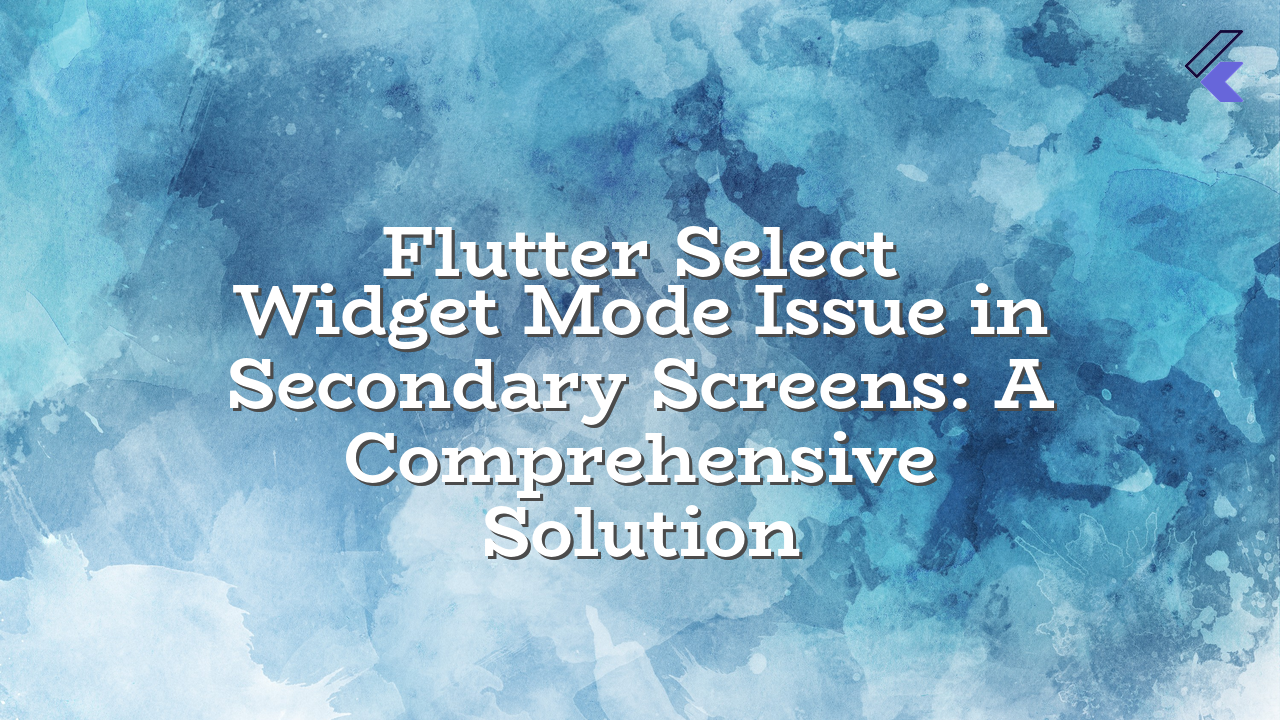This article addresses the problem where updating the Flutter select widget mode to version 3.29 results in lost functionality for selecting widgets in secondary screens. The issue arises because the selection mode always stays on, preventing users from clicking through to secondary pages after selecting a widget.
Problem Description
After upgrading the Flutter select widget to version 3.29, the widget selection mode persistently remains active. This prevents users from clicking on selected widgets in secondary screens, as the action refreshes the app and returns to the home page. Consequently, navigation to secondary screens is disrupted.
Possible Errors and Troubleshooting
- Incorrect widget initialization: Double-check the initialization of the select widget and ensure it’s properly set up for use in secondary screens.
- State Management Conflicts: Make sure you’re using the correct state management approach (e.g., Provider, BLoC) and that state updates aren’t interfering with widget selection or secondary screen navigation.
- Navigation issues: Verify that the navigation routes are correctly configured and that the app properly navigates to the secondary screens. Ensure proper use of
Navigator.pushor a similar navigation mechanism. - Builder Issues: If you’re using a builder in the widget, ensure that the builder doesn’t have any unintended side effects causing the selection mode to persist. For example, verify that the build method does not internally alter the widget selection state.
Solutions
1. Implement a Toggle Mechanism
import 'package:flutter/material.dart';
class MySelectWidget extends StatefulWidget {
@override
_MySelectWidgetState createState() => _MySelectWidgetState();
}
class _MySelectWidgetState extends State {
bool _isSelectionMode = false;
void _toggleSelectionMode() {
setState(() {
_isSelectionMode = !_isSelectionMode;
});
}
@override
Widget build(BuildContext context) {
return Scaffold(
appBar: AppBar(
title: Text('Select Widget Mode'),
actions: [
IconButton(icon: Icon(Icons.select_all), onPressed: _toggleSelectionMode),
],
),
// ... other widget building
);
}
}
This solution introduces a toggle switch to control the selection mode. When the mode is enabled, widget selection functionality is activated. Disabling the mode reverts to the standard state.
2. Refactor Widget Logic for Secondary Screens
Evaluate the logic in your secondary screen widgets. Ensure that the widget selection is not interfering with the screen’s construction. Review the state management to ensure that changes don’t unintentionally update the selection mode.
// Example of a secondary screen widget:
@override
Widget build(BuildContext context) {
return Scaffold(
appBar: AppBar(title: Text('Secondary Screen')),
//Widget Logic to select widget from selection list
// ... secondary screen content
);
}
3. Clear State in Navigator Push
If you are using navigation, ensure that the current selection state for the widget is cleared in the navigation method (e.g., Navigator.push). This prevents the stale selection state from persisting between screens.
// Example of a Navigator push:
Navigator.push(
context,
MaterialPageRoute(builder: (context) => SecondaryScreen()),
);
Additional Considerations
- State restoration: Ensure that the widget state is properly saved and restored when navigating between screens. Incorrect state management can lead to persistent selection mode issues.
- Dependency injection: If using dependency injection, verify that all dependencies related to the select widget are correctly managed and updated as required.
By carefully examining and adjusting the widget initialization, navigation logic, and state management, you should be able to resolve this issue and effectively utilize the updated select widget in your Flutter application.

